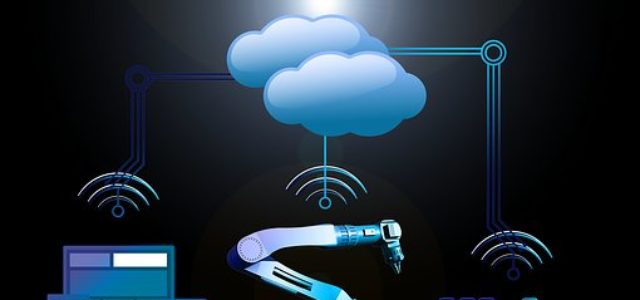In my previous series of articles, I addressed the urgency and desire for organisations to address enhancing Employee Experience in a bid to rapidly adapt their ability to attract, on-board, train & develop, enable and empower employees to be as collaborative, innovative and productive as possible – in an bid to stay ahead of their competition in the Industry 4.0 era.
Now it’s time to get into the actual mechanics of what creating an optimal Employee Experience Design process looks like. I’ve based my own approach to supporting a cross-functional group of executives in any organisation to apply data science, insight comprehension and actionable people-centred design approaches to optimising the work environment within which our people can operate.
I don’t suggest this is simply an effort to create a ‘nice place to work,’ but rather to devise as commercially competitive an organisation as possible to win out over the disruptive forces being undertaken in every industry, every size organisation and across every geography.
Josh Bersin and his team at Bersin by Deloittes have continually provided powerful guidance and insight into the powerful direction organisations are shifting toward to support enhanced operating environments across their enterprises to ensure they can achieve competitive advantage. In one of his opening presentations, Josh provides a Glassdoor graphic that indicates that, at best, the vast majority of companies in their survey of 200,000+ respondants indicate their engagement averages poultry 3.2 out of a possible 5.0.
He posits, “What are these most engaged organisations doing to achieve at the highest levels?” The hidden corollary being, “And what are you doing to support higher engagement within your organisation?”
I’m a great fan of the Deloitte University Press’ Global Human Capital Trends (2017) reports that come out every year about this time. These reports are extensively researched across 10,000 respondents across 140 countries, and provide likely the most leading edge thinking that organisations are undertaking across the entire employee life cycle, around the world.
Frankly the list of considerations is daunting to those of us HR professionals who have lived in less-than-perfect organisations, many of whom have, at best, operate an Applicant Tracking System for recruitment, maybe a Learning Management System for training, or an HRIS capability of some description – and would be lucky to have the time for a wholesale review of your company’s Employee Experience.
The 2017 report takes us straight into the digital world, and a rather aspirational realm that feels more like science fiction than anywhere close to most of our realities today (my version of Heaven, however!) – and for that reason – I’m going to revert back to the 2016 Deloitte University Press’ Global Human Capital Trends report as it captured where most of us are today here in the UK – looking at how a far more scientific and intentionally design oriented view of how we are organised, the challenges for leadership, the power of cultural design, engagement, learning, design thinking, the role HR plays, using people analytics, digital HR tooling and alternative talent pool trends like the Gig Economy.
I attended one of Josh Bersin’s follow up webinars introducing the 2016 report with an emphasis on what the underlying drivers of the digitally reinvented organisation were – and the trends were compelling.
The trend shaping our current view of enhanced Employee Experience involves giving power, control and decision-making capability back to cross-functional team units and newer generations of digitally native employees through empowerment – sounding much more like an early stage tech start-up than the classic 20th century hierarchical command and control environments most people my age grew up within (and frankly detested, but tolerated for as long as we could).
The overarching trend that HR technology applications are taking today have evolved over the last 16 years from automating processes to integrating talent management capability. Then from cloud-based “access from anywhere devices” to several applications that are designed to “make work life better.”
Upon reading the Deloitte University Press’ Global Human Capital Trends (2017), almost the entire focus is taking us on an exponential journey from wresting control from the chaos of poorly designed 20th century organisational constructs straight into the Digital Age where A.I., cognitive analytics tools, chat bots and the Future of Work is reshaping everything we’ve known about the very nature of traditional careers and work in general.
What I see underlying Bersin’s fundamentals seems an intelligent hybridisation of world-class mature technologies with small company agility and Silicon Valley technology working structures such as Agile, Teal and Holocracy taking on new relevance – given that ‘the team’ is the new core unit of productivity measure.
The notion of traditional leadership and management structures, operating in silo’d functions, cooperating (often intolerantly) with other departments and functions to get things done seems wholly marginalised as the new generations of disruptive market entrants are tackling product innovation and speed-to-market challenges with relative ease – often cutting to a fraction of a percent the time it takes to deliver exactly what their customers asked for (and inspirationally more they hadn’t imagined but are delighted to have).
So the network of teams is the new way to look at how people organise – what are we doing to help the individual within the work environment? Oddly enough – it would seem that we’re starting to recall some rather ancient concepts when comprehending what makes people actually tick – and it turns out that a holistic focus on the Mind, Body and Spirit of a human being is the best possible way to get them feeling vital, engaged and to support superior performance! Funny how those ancient, rather well proven notions keep coming up to remind us how far we wandered from our own personal realities.
Wrapping these sorts of concepts up into a design-oriented, human-centred approach to developing a terrific and effective Employee Experience suddenly doesn’t seem like such a crazy exercise in futility – but a rather commercially savvy approach to connecting people with themselves, with a team, with a community of inspiring peers and leaders and to a vision that is bigger than themselves they can attach to – all powered by organisational design and digital tools to get their jobs done well, fast, from anywhere at any time – on any device.
But how do we come to know – empirically – using data (such as our peers in Marketing, Sales and Finance have been doing for years now), to know if we’re winning or losing on the battlefield of Employee Experience?
Enter the time to engage with data science! Don’t panic – this stuff isn’t nearly as hard as the academics and would be management consultants want you to think it is. Imagine your spreadsheets (cleaned up and tidied a bit), mashed up intelligently with other business intelligence data from Finance, CRM, Customer Survey tools, Employee Survey tools and really from wherever there are data points about your people – and handed over to a rather slick database tool that looks for relevant or intrinsically connected threads to help you tease out correlations across some very interesting things you may have not considered on your own. Now imagine that these tools not only kick out things for you to explore within your fancy data set – but allow you to simply type in queries – as if you were doing a simple Google search – to dig deep into hypothesis such as the link between personal performance and training, sick time taken and employee engagement, best producers vs. tenure or education…
And what you found is entirely the opposite to what you originally hypothesised? What if you, in your analytics exploration, discovered that training wasn’t a factor in success – but persistent and resilient behaviour in fact was? Or that your best performing university graduates actually attended state colleges, apprenticeship programs or had prior work experience? What if you found an explicit link between employee engagement and customer satisfaction?
You’d be in the money with your CEO – I can assure you – but not unless you have the data to back up your assertions and insights. Invest in people analytics people – it’s now table stakes to get the job done – and without this valuable insight – you’re just another person with an opinion.
Learning is coming on in leaps and bounds. I took my first online course 7 years ago – and it cost me about £1,500 to ‘certify’ my participation and pass the exam. I think it had to do with HR law or compensation and benefits management – as it was a rather unmemorable experience and a right pain in the backside – along with being exasperating from a technical perspective. Fast forward 7 years and I’ve taken over 10 courses off my mobile phone through Coursera, MIT, The Khan Academy, Cornell University, Harvard University, Oxford and Cambridge Universities – attended over 40 webinars and listen to podcasts about 3 times a week to learn something new.
A well designed and integrated learning and development capability will both save a company millions in having to ‘hire’ those new skills in-house – or in preparing an existing workforce to take on ever more challenging work assignments. Oh – and the happy (commercially powerful) side effect? Your people will love it because it shows them you care about their personal development, their growth as people, and their further career prospects. It also shows people they don’t need to leave to keep learning – they can just reshape their propositions right where there are today – learning from wherever and whenever they need to. I take in most of my new knowledge on the train into London, the Tube rides, between meetings and on the weekends. Not because I have to – but because I enjoy it – like reading a great novel or treating myself to a spa appointment.
Folks – another basic functionality is building an amazing educational environment that is contextually intelligent, managed with a personalised portal for every person in your organisation – cloud-based, secure, highly available and just-in-time to get the new thing done well.
So now it’s all starting to come together – your employees (it turns out) are human beings. Those human beings don’t think of their lives as compartmentalised boxes, but rather have full lives that they want to actualise and optimise with your help. They have come from a life full of consumerised, thoughtful applications, great products and solutions, convenience at every turn and imaginative educations and experiences they can’t wait to unleash at work. They have families, friends and a social life that engages with them almost every waking hour they have – on smart phones and tablets – and are surrounded with hundreds of inputs across every aspect of their personal experience that are pulling at their attention spans.
If we want to get the most from our employees – then we had better be pretty clever at designing holistic solutions that stretch across the span of our peoples’ personal and professional lives in a well integrated and intelligent manner – and provide the structures, teams, tools and personal enablement (support, encouragement and leadership) that can help them to achieve a superior personal outcome for them – whilst we engage them to collaborate, produce and innovative at work.
Leadership and management of our people has taken on a whole new dimension of consideration we need to get smart about fast, if we’re going to inspire and mentor our employees to achieve their goals and targets. The age of the Micro-Manager is gone. The dictatorial command and control production driver is dead. People want to be empowered, inspired, to have meaning in their lives (not just at home), and to see the impact of their efforts on the wider organisation. They can get that by being entrepreneurs if they have the guts to give that adventure a go – but many of us would rather work in an organisational setting that supports our humanity whilst working with other people we can learn from, grow with and achieve together.
Thus the new realm of leadership is far more about being a great mentor and coach than ever before. Setting people up for success, and picking them up when they fall – educating and encouraging them to learn from their missteps. Guiding them towards a future full of possibility vs. a sense of servitude. People want to achieve a sense of self actualisation – to transcend the average life, to experience something special and to live a life of intention, awareness and growth.
So what are we doing to create that sense of loyalty, discretionary effort and innovative creativity? We need to trust the fact that people can be self-directed, that they can likely produce a better outcome if we guide them to work cross-functionally together and offer them the barrier-clearing support they really need to achieve incredible outcomes.
We need to let go of archaic notions taught to us by years of marginal management and leadership experience where we have to have all the answers, control all of the activity and shape every move our people make lest they wander aimlessly down the hallways seeking yet another cup of tea or coffee. True leadership is about trust, coaching and barrier clearing – along with a healthy dose of wanting to see them grow and develop as human beings – just like we wanted all of our careers.
The graphic above outlines beautifully the leadership equation as related to employee needs and and likely outcomes (borrowed by the Integro Leadership Institute). Seems so simple a connection between what people seek in their lives and what a coach/mentor can offer them to achieve a highly effective outcome – but how often do we get this wrong? All too often in my experience – and herein lies perhaps the most important aspect of human-centred employee experience design.
It’s the essence of what human beings value most in their life experience – the depth and richness of human interactions is the sort of thing we live for. Likely work isn’t exactly the first place you might go looking to fulfil your needs in most cases – but think about just how powerfully differentiating your work environment would be if this was the sort of interaction you could come to expect there…
Heather R. Younger, Founder and CEO of Customer Fanatix, recently came into my pouncing happily into my network recently – off the back of my purchasing her book entitled The 7 Intuitive Laws of Employee Loyalty. As her focus is seemingly first and foremost on the quality of the relationship between a company and its customers – you’d think what you get from Heather is mostly about the marketing and branding elements associated with customer perception – or some such sales speak. But here is Heather’s LinkedIn profile description of her company and her involvement in it:
“Customer Fanatix is an employee experience and leadership effectiveness consulting firm. We provide organizations with the business intelligence they need to drive amazing employee experiences. We use employee insights to assist organizations in making informed strategic decisions about their most important stakeholders. Our end game- To serve as the catalysts for our clients to use the voices of their employees to drive deep cultural improvements, creating employees fanatical about their brands.”
Now THAT’S what I’m talking about – a direct link from fulfilled and well cared for employees (humans) that then amazingly pay it forward toward their grateful and appreciative customers – who oddly enough also end up feeling rather fulfilled! Doesn’t seem hard to grasp – but somehow we miss this bit off more often than not. And it’s a shame really – as there is perhaps nothing more expedient we can do to improve Employee Experience than enrich our relationships with other people – and thus I’ll end on this note as it seems to tie these important things together nicely, and leave you with a lovely infographic from Heather’s book. Enjoy!
In my last installment article – I’ll be talking about what an Employee Experience Design project actually looks and feels like, and take you on a tour of the process we undertake as well as the powerful difference a great EX Design effort can provide.
Article by channel:
Everything you need to know about Digital Transformation
The best articles, news and events direct to your inbox
Read more articles tagged: Featured, Future of Work, HR


















